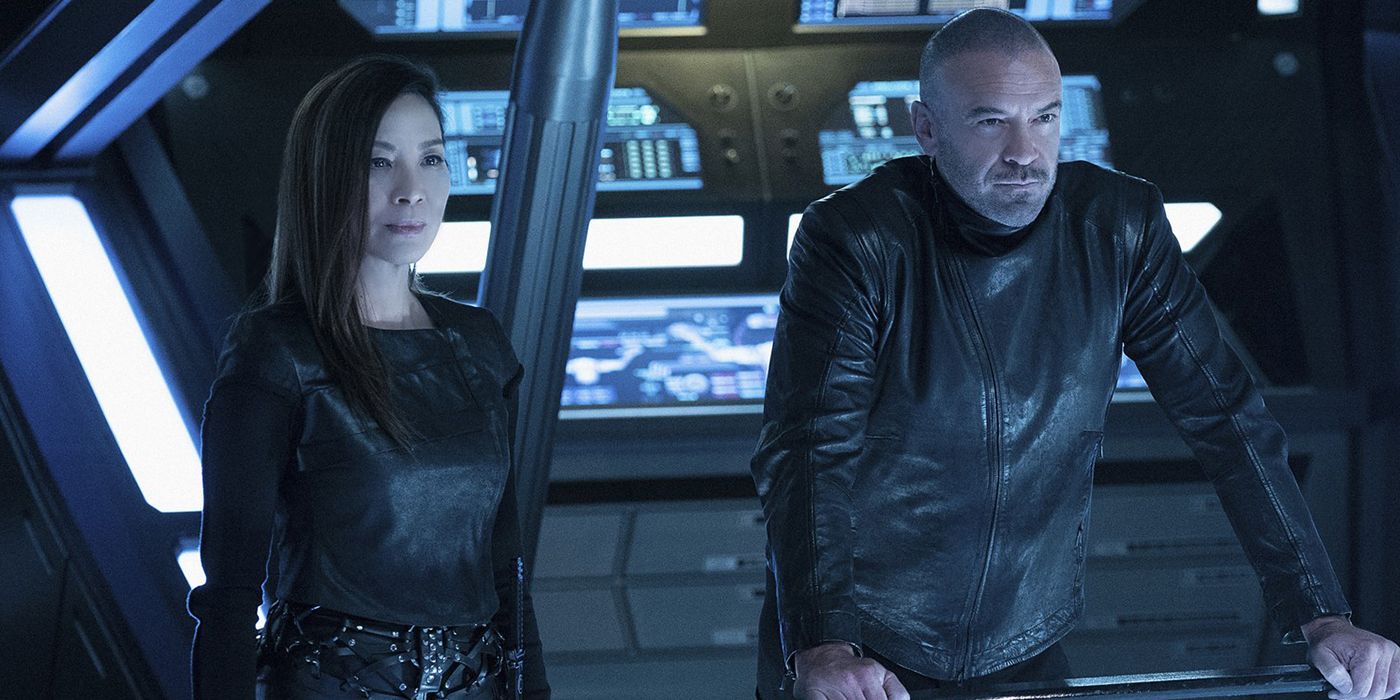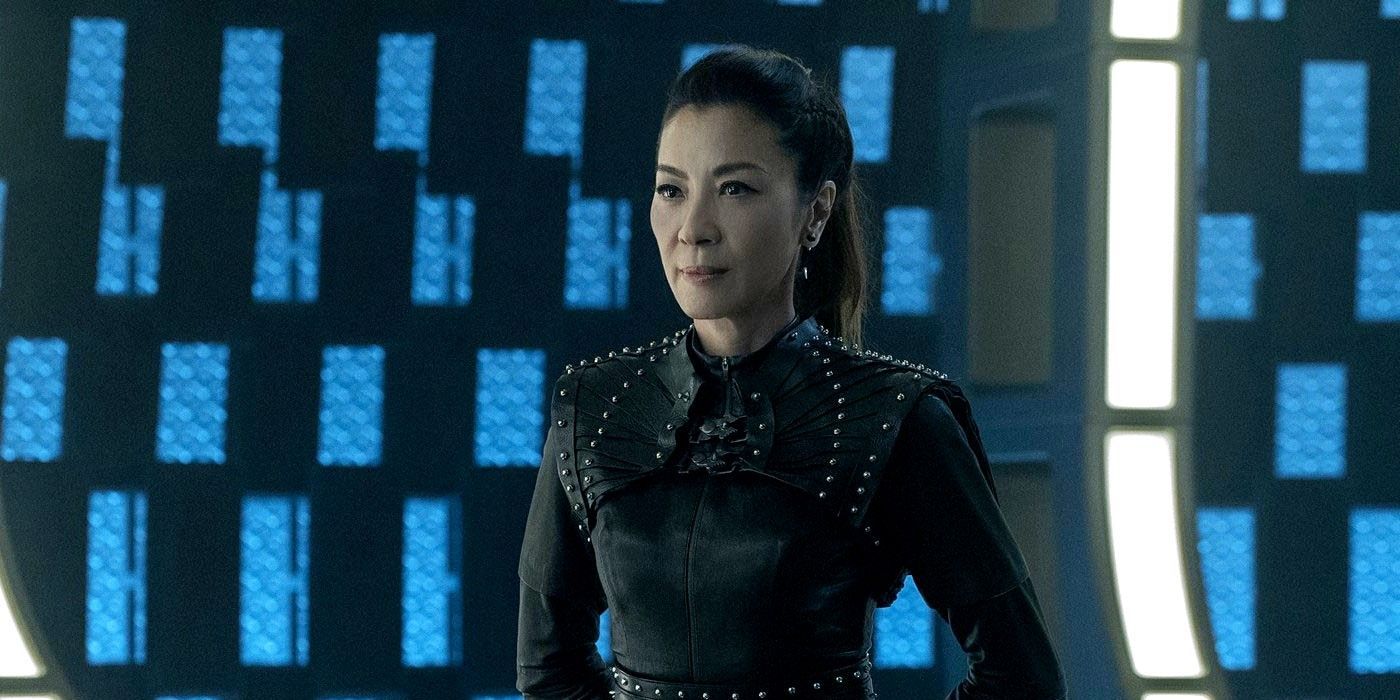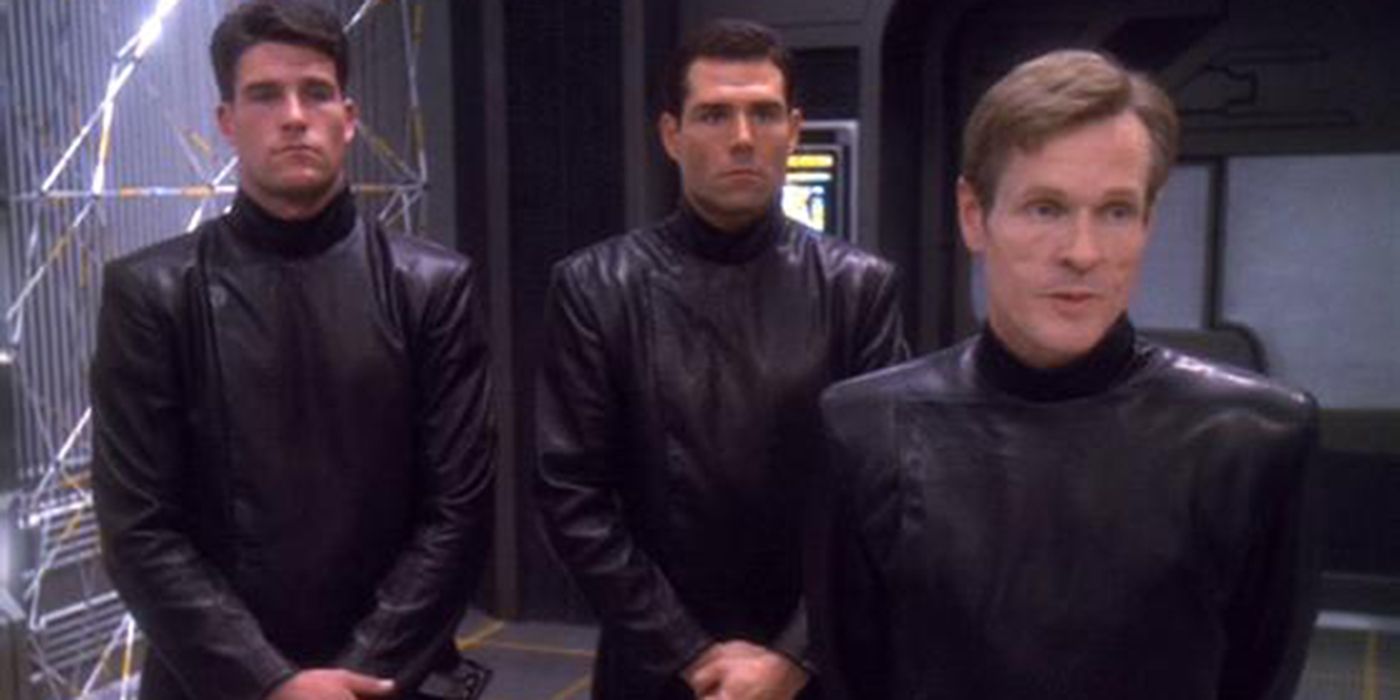Starfleet always had an Intelligence section, first mentioned in The Original Series, Season 2, Episode 15, “Journey to Babel.” But it wasn’t until Star Trek: Deep Space Nine that they revealed its darker twin, Section 31. The clandestine organization has made its presence known in almost every Star Trek iteration since, and a new series has been in development since 2019, featuring Michelle Yeoh’s Mirror Universe Georgiou.
Section 31 caused a great deal of controversy within the fan base, and continues to divide Star Trek lovers over its dark mission and questionable methods. But it remains an indelible part of the universe at this point, and according to canon has been around even longer than the Federation itself. Untangling its purpose and effectiveness is a mystery by design.
Canonically, the unit is a section of Starfleet Intelligence, though it doesn’t seem beholden to any other part of the Federation save itself. It claims its authority from the original Starfleet Charter: specifically Article 14, Section 31, which allows for extreme measures to be taken in the face of existential threats to the Federation. Its precise origins are uncertain beyond that. It acts as the Federation’s “black bag” division, performing dark deeds in a clandestine fashion without the knowledge or approval of the rest of Starfleet Intelligence. Regardless of its incarnation, it methodology is the same: using tactics and techniques that the Federation formally disavows in order to ensure the government’s survival. That includes tampering in forbidden fields such as time travel, the creation of a threat assessment system that eventually became the galactic threat Control, and the design of the morphogenic virus that infected the Dominion.
It has existed as long as Starfleet, and first appeared in the canon timeline in late 2154. Star Trek: Enterprise, Season 4, Episode 15, “Affliction,” revealed that the Enterprise’s security chief, Malcolm Reed, had been a Section 31 operative for some time before joining the crew. Star Trek: Discovery depicted them more openly, and its members even wore a black badge to denote their status. It was essentially no different than the Obsidian Order or the Tal’Shiar, save that it received no official sanction from its government.
Section 31's presence in Enterprise and Discovery were prequels of a sort, embedding it in the timeline after its existence had been developed. In terms of real time, fans didn't see them until they first appeared late in Deep Space Nine’s run: Season 6, Episode 18, “Inquisition." Producer Ira Steven Behr created it to explore the Federation from a position of realpolitik, contrasting it with Gene Roddenberry’s utopia for which it committed all manner of sinister deeds to protect. In Star Trek: Deep Space Nine Companion, he talks about the complex moral decisions that every government has to make, and speculated on what they might look like in a government as benevolent as the Federation. It also entailed some competition: Babylon 5, a more dystopian look at humans in space, was running in competition with Deep Space Nine. Section 31 appeared as a means to address that.
The sharp contrast between Section 31’s cynical dirty tricks and Starfleet’s higher values is part of what drives the controversy with fans. Naysayers claim it goes too far, undermining what was always intended to be an optimistic vision of humanity’s future. But their appearance in the darkest moments of Deep Space Nine was by design, and gave Star Trek a storytelling tool it desperately lacked before: the consequences of compromise. At that point, the war against the Dominion was going very poorly and the Federation was taking heavy losses. One episode later, Season 6, Episode 19, “In The Pale Moonlight,” Captain Sisko engaged in murder and deception to bring the Romulans into the war, creating a lie that ends up saving the Alpha Quadrant.
Similar characters like Malcolm Reed and Dr. Bashir were confronted with profound moral dilemmas thanks to Section 31, and their comparative success in addressing them helped deepen and distinguish their personalities. The division has done much the same for Discovery and its look at technology run amok, which is responsible for such disasters as Control and other Frankenstein creations conducted in the name of keeping the Federation safe. That said, their morphogenic virus did induce the Dominion to surrender at the end of Deep Space Nine, and the Federation opted to use it as leverage rather than keep their hands clean. Dirty tricks make for good moral dilemmas, which is something Star Trek can always make strong use of.



